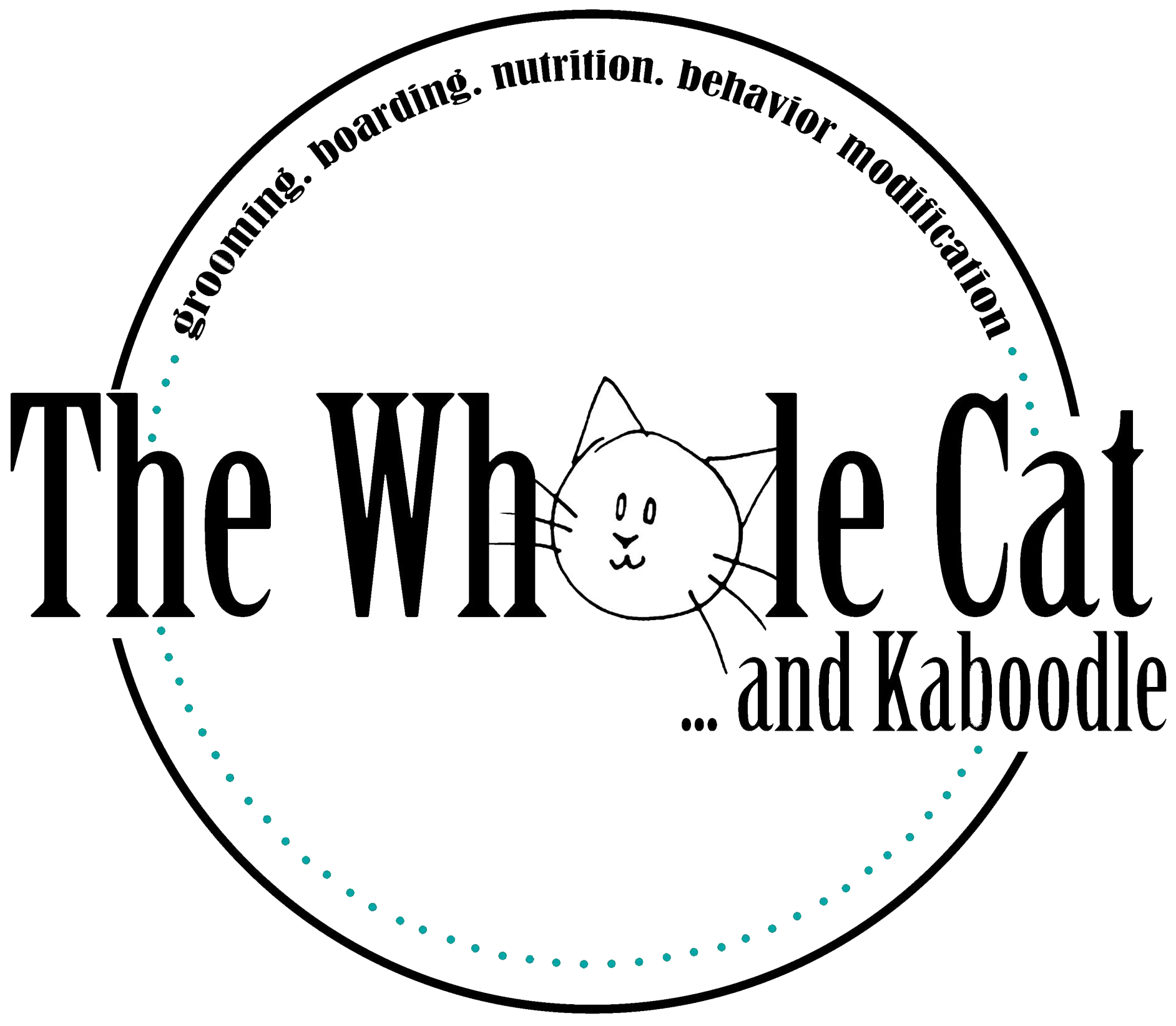The Nutrition Behavior Link
Basic premise: any deviation from a species appropriate diet/ routine will result in a need for compensation. Inadequate compensation will result in behavioral changes due to the hardwiring of the species.
Softer premise: any “bad” behavior is the result of an unmet need.
The Immutable Truths of the Mother Nature Model Regarding Cats
- Cats are obligate carnivores.
- Their protein requirements are at the very core of their behavior/ health.
- A diet with inadequate protein (low protein, processed protein, lack of variety in protein) is directly causal to territory issues including aggression and territory marking.
- Aggression- if I don’t have enough then I will need to chase off or kill off competition for limited resources.
- Territory marking- if I don’t have enough then someone (seen or unseen) is stealing from my territory, therefore I must use the pheromones in my urine to stave off or scare off competition for limited resources.
- Cats originated out of the desert and are designed to get water from their prey.
- Cats on a dry-food-only diet are a full 10% more dehydrated compared to cats on a canned or raw diet. This dehydration results in a “hangover effect.”
- A common by-product of the “hangover effect” is an extremely low tolerance for outside stimulation- such as interaction with other pets, children and even adults.
- Undetected cystitis often leads to separation from the litter box. Cats associate painful urination with the box itself and will seek out other places to eliminate.
- Synthetic preservatives such as BHA, BHT and Ethoxyquin used in packaging and in the product and source ingredients are known to cause liver and kidney damage in animals.
3. Cats are crepuscular in nature.
- Grazing and/ or constant exposure to the smell of their food will keep the kitty’s gut alkaline.
- A constant alkaline state predisposes cats to diseases such as diabetes, obesity, cancer, IBS/ IBD
- Constant exposure to strong smelling dry food also makes it difficult to transition cats to canned and raw food.
- Cats are designed to gorge and fast. A proper gorge is achieved through a diet of mostly meat.
- Underfeeding a cat will almost always result in both territory related aggression and house soiling.
- Grazing and/ or constant exposure to the smell of their food will keep the kitty’s gut alkaline.
4. Cats are prey as well as predators
- While there is no direct nutritional link here, we can extrapolate that any of the other effects can be magnified due to the stress hormones released in times of fear or uncertainty.
- Each time a cat is moved to a new environment it assumes that there are predators present until it knows otherwise. This state is also a great source of stress for cats and will cause the immune system to be unavailable. The best remedy for this is to get the kitty into a predictable routine as soon as possible.
The Three Critical Components of a Cat’s Natural Habitat
Cats, like all animals, are hardwired for survival. Expecting a cat to adapt to a life based on human convenience and misinformation is frustrating for both human and cat. A simple guide to creating a territory (home) that brings out the very best in your cat, and offers the best chance for “good” behavior, can be found in the Mother Nature Model.
A cat’s natural territory will have these three components:
- Abundance. A cat will scent mark its territory with the pheromones in its feet to establish the amount of territory it needs to be adequately fed for the duration of its life.
- Variety. This territory will be replete with a variety of furry and feathery critters, bugs and grasses. Variety is the cornerstone of a healthy immune system.
- Bioavailability. The food in this territory will be alive, teeming with an abundance of nutrients and good bacteria- all in an unaltered state- immediately available for use and deployment.
How does all of this translate into a diet for a domestic cat? Easy-
Feed your cat a diet of canned and/or raw food twice per day on a flat dish. Feed until the cat is satiated. Find three or four proteins and manufacturers that your cat enjoys. Rotate the foods. Elevate the diet with raw food, freeze-dried raw treats, raw goat milk and cat grasses.
Note: Raw food is truly the gold standard for feeding our obligate carnivore friends:)

